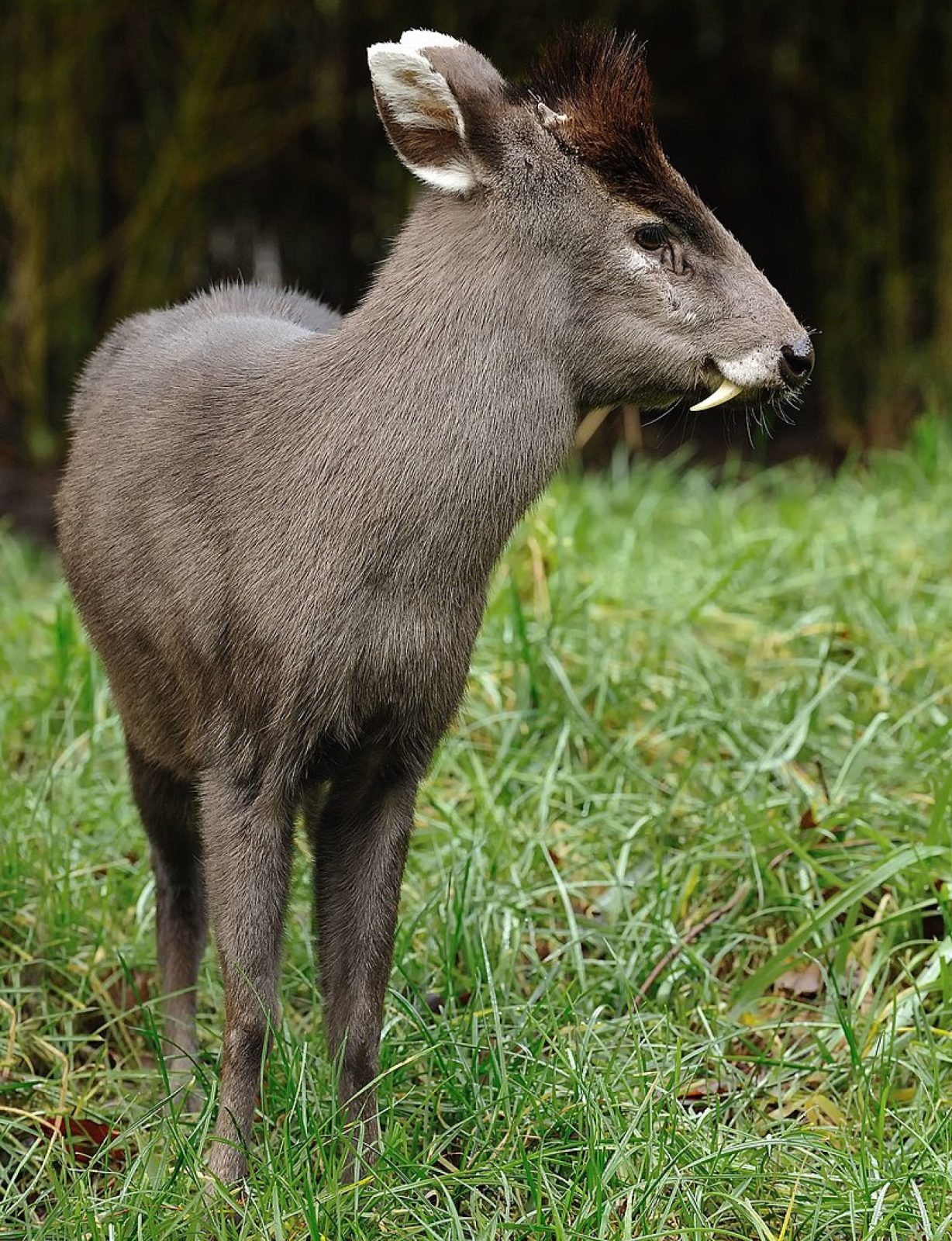
Tufted deer
The tufted deer is a small species of deer which gets its name from a prominent tuft of black hair on its forehead. It also has fang-like canines for the males. It is a close relative of the muntjac, living somewhat further north over a wide area of central China and north-eastern Myanmar. Suffering from overhunting and habitat loss, this deer is considered near-threatened. It is the only member of the genus Elaphodus, and this is a sister clade of Muntiacini
- E. c. cephalophus – the largest subspecies, brownish coat, found in southwestern China and northeastern Myanmar.
- E. c. michianus – has a relatively narrow snout, found in southeastern China.
- E. c. ichangensis – has a relatively broad snout, with a grey-brown coat, found in Central China.
- E. c. forciensus – doubtful subspecies, distribution unclear.T
The tufted deer inhabits high, damp forests at 500–4,500m, close to the tree line. It is found in both evergreen and deciduous forests with extensive understory and nearby freshwater supply. The availability of salt licks is also a positive factor to the presence of this animal. This deer is able to withstand minor human disturbances, can be found living on farmlands.
Usually found in pairs, it is crepuscular (active at dawn and dusk), and follows set routes through its territory (which the males defend aggressively).
In 1998, the population was put between 300,000-500,000, though it is believed that a dramatic decline is highly likely (China has a habit of overharvesting its wildlife). All issues have not been resolved, and there has been an effort to create a genetically healthy population in captivity, in order to back up the wild one. This has not been helped by them not being considered particularly interesting (and therefore not making particularly interesting zoo exhibits).










